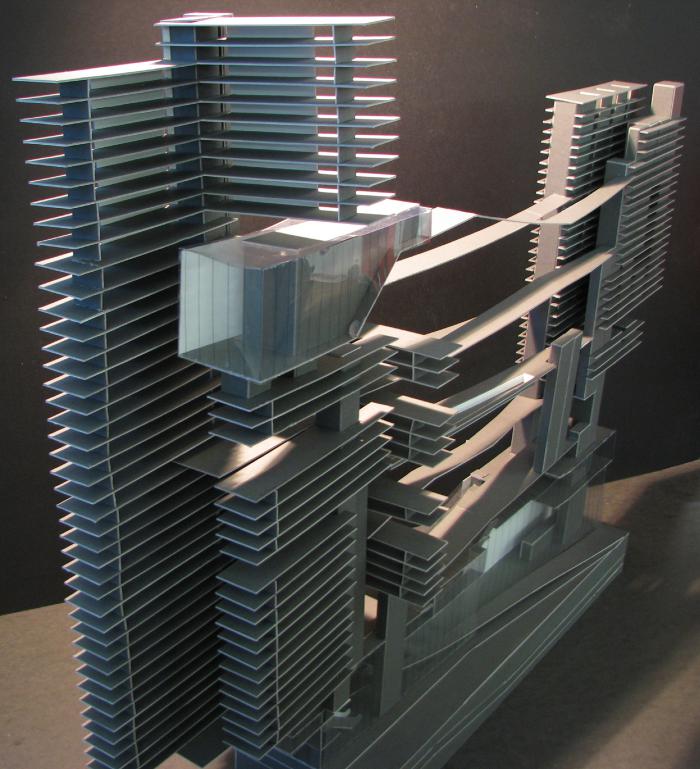Developmental Progression

- Discipline
- Architecture
- Semester
- Autumn 2007
- Course
- Architectural Design VII
- Work Type
- 3D Models
- faculty
- Tilder, Lisa
- student
- Dinnen, Stephen
- Location
- Columbus, Franklin, Ohio, United States, NA
- Description
- This was a student project by Stephen Dinnen for Lisa Tilder's ARCH 441 course, Autumn 2007. Developmental progression deals with the experience of interacting with programmatic elements. The ramp system pulls pedestrians from the street and draws them into the building. The progress draws the person through public, semi-public, and private portions of program. This path begins with parking, lobby space, and retail. The street-level pedestrian ramp entrance has direct connection with the public retail spaces. These spaces lead to the restaurant in the progression, which is located on the north side of the site and directed toward the Arena district in Columbus, Ohio. From the restaurant, the path becomes semi-public, where only members of the hotel and residences are allowed forward. The sequence takes the person into the pool/health club in the center of the ramp system and ends with a theater/gallery space at the top. This theater is positioned facing downtown Columbus and utilizes views of the city. The private spaces of the residence and hotel are positioned at the ends of these pathways. The residence is positioned away from the Arena district and it is orientated toward views of the river and downtown Columbus. It has single rooms per floor which provide another level of individualization and privacy. The hotel is placed on the site closest to the Arena district because most of its business is derived from that area and it incorporates multiple rooms per floor, separating its form from that of the residence. - Stephen Dinnen This work is a part of the online collections of the Knowlton School of Architecture Student Archives, The Ohio State University. It is part of an effort to make accessible student work ranging from the first student that graduated from the program in 1903 to the present. The effort to preserve and digitize drawings in the Student Archives was sponsored in part by the Graham Foundation.
